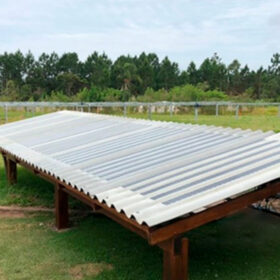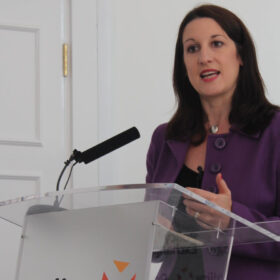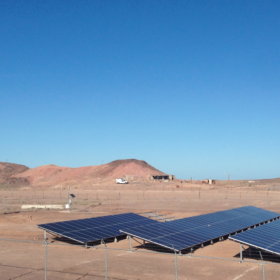Israeli regulator approves regulatory framework for storage
Israel’s planning administration has approved the terms for deploying up to 16 MWh of storage facilities. The government said that due to the Gaza conflict, storage has become ever more important for emergencies.
Assessing non-linear tradeoffs in photovoltaic mini-grids
Researchers in Sweden investigated the complex non-linear tradeoffs between capacity expansion costs and reliability levels of off-grid PV mini-grids and found that capacity expansion based solely on cost-minimization may result in several reliability issues.
PV is the most viable renewable energy technology for the Amazon Energy Transition
In the assessment of scenarios for a sustainable and resilient energy transition in isolated systems in the Amazon, a portion of photovoltaic generators should be installed centrally in order to guarantee a central system of high performance, availability and reliability without clearing any further forest areas, while another significant portion of the generators should be installed distributed over rooftops and in agrivoltaic projects.
Engie unit to build 60 minigrids in Zambia
MySol Grid Zambia, a subsidiary of Engie Energy Access (EEA), has secured $7.5 million of debt from the Facility for Energy Inclusion (FEI) to build 60 minigrids. The projects will provide electricity to more than 40,000 people in rural areas.
What might UK solar expect from a change in government?
Chris Sparkes, lead technician at UK solar installer Solar Fast tells pv magazine simply throwing money at the PV industry will not suffice.
How ‘productive use of electricity’ can unlock economic potential across Africa
“Productive use of electricity” (PUE) has been the buzzword in the African solar industry for the past two years. The African Solar Industry Association (AFSIA) has prepared a catalog of solar-based PUE solutions for the continent, including a plethora of new solar off-grid and on-grid systems.
Mobile solar system for farms
India’s Vivasvan Solar has designed a foldable solar structure mounted on a trolley. The system has mechanisms to prevent damage to the panels during transit and is especially useful for agricultural farms.
Producing the goods
Germany’s Fraunhofer Institute for Solar Energy Systems (ISE) is demonstrating how a solar-powered refrigeration unit and dryer could be self-sustaining and improve food security in Kenya.
Minigrids edging closer to profitability
The minigrid space continues to attract a lot of attention from development partners in Africa. Minigrids can actually generate profits, so there is no doubt that commercial finance players will eventually jump on the bandwagon, according to the Africa Solar Industry Association (AFSIA).
Kenya to combat rural energy access gap with over 130 solar minigrids
Kenya’s government plans to build 137 solar minigrids across remote locations in the East African country. The project received $150 million in funding from the World Bank.










